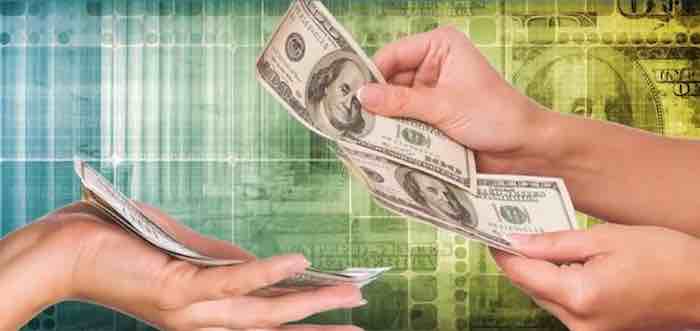By Dan Calabrese ——Bio and Archives--August 16, 2018
American Politics, News | CFP Comments | Reader Friendly | Subscribe | Email Us
 The media are trying pretty hard to convince you the Trump economy isn’t as good as the evidence says it is. They want you to ignore GDP growth and focus on “wage stagnation,” even though wages aren’t as much an indication of overall prosperity as they are the state of the labor market and its ability to be productive. Also, “wages” are only one measure of how much people are earning, and it’s an increasingly anachronistic measure given the changing state of the economy.
The media are trying pretty hard to convince you the Trump economy isn’t as good as the evidence says it is. They want you to ignore GDP growth and focus on “wage stagnation,” even though wages aren’t as much an indication of overall prosperity as they are the state of the labor market and its ability to be productive. Also, “wages” are only one measure of how much people are earning, and it’s an increasingly anachronistic measure given the changing state of the economy.Americans’ spending started the third quarter on a strong footing amid a tight labor market and robust consumer confidence. Retail sales—a measure of spending at U.S. stores, websites and restaurants—rose 0.5% in July from the prior month, the Commerce Department said Wednesday. That was well ahead of economists’ forecasts for a 0.1% increase. The growth was driven by stronger spending at grocery stores, restaurants, department stores and clothing stores. “Restaurants are a highly discretionary category, and continued strength suggests that households are not too worried about higher gas prices and that tax cuts are providing a cushion,” Morgan Stanley economists said in a note to clients. Excluding motor vehicles, sales were up 0.6% in July, and excluding gasoline, sales were up 0.5%. Excluding both categories, sales were up 0.6% last month. Sales at food and beverage stores increased 0.6% in July, the strongest rate of growth since December last year.
The National Federation of Independent Business reported Tuesday that its small business optimism index climbed in July to the second highest level in its 45-year history. At 107.9, the index is within 0.1 point of its July 1983 record. The July survey also set new highs for owners reporting current job openings or plans to create jobs. The biggest problem in the survey is that 37% of owners say they had job openings they couldn’t fill. Meanwhile, the Atlanta Federal Reserve Bank’s wage growth tracker moved up to 3.3% in July on an annual basis.All this seems to be setting us up for growth numbers in the third quarter – which we’re already halfway through – that could be even better than the 4.1 percent we saw in Q2. There are still things that could go wrong, of course, particularly if President Trump’s tariffs continue to add to the cost of consumer goods and industrial sourcing, thus counteracting all the positive impacts of the tax cuts and regulatory reforms. Whatever it is he thinks he’s achieving with these tariffs, we need to pray that it’s achieved quickly and we’re not settling in for a long trade war. But if the tariffs are having an impact, it’s been limited thus far. The economy is stronger than it’s been in a long time. Businesses know it. Consumers know it. And they’re acting accordingly. One word of caution: GDP growth measures per-capita outcome on a quarter-over-quarter basis, which means you could have strong growth coming out of a weak period, but still have a lot of catching up to do. After eight years in which 2.0 percent growth was the best we could do, we need more than a few strong quarters to get the economy back to the productive engine we need it to be, not only to produce private-sector prosperity but also form a strong enough basis to deal the mounting national debt, which remains a looming disaster that Congress shows no interest in addressing via spending cuts. It is possible to grow your way out of deficits, but you need really strong growth over a sustained period of time to do it. So far so good, but we have a long way to go.
View Comments
Dan Calabrese’s column is distributed by HermanCain.com, which can be found at HermanCain
Follow all of Dan’s work, including his series of Christian spiritual warfare novels, by liking his page on Facebook.